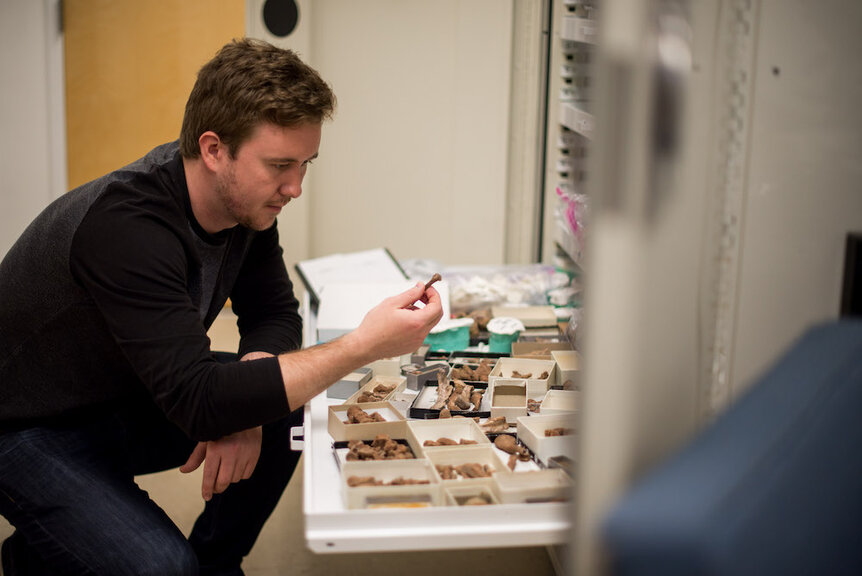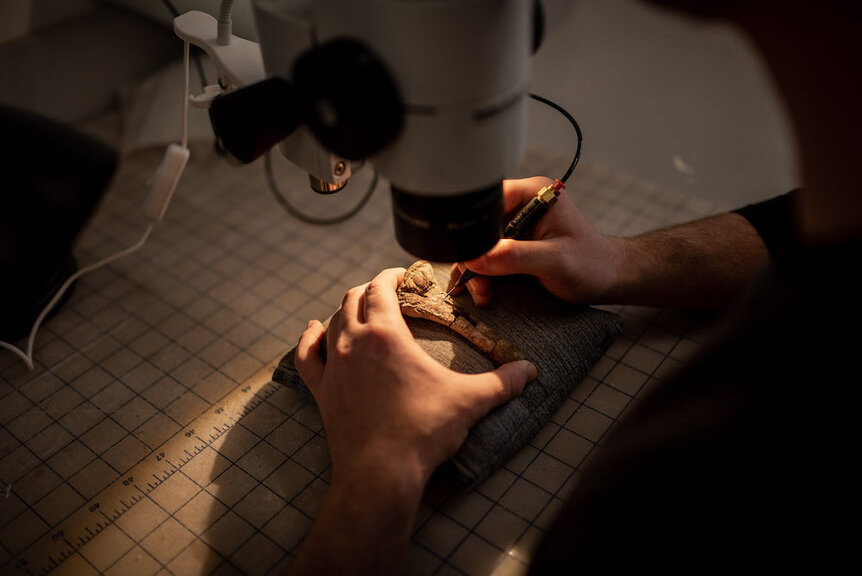Create a free profile to get unlimited access to exclusive videos, sweepstakes, and more!
Africa’s oldest dinosaur found right where Panganea supercontinent led paleontolgists to dig
They were right where paleontologists expected them to be.

Jurassic World Dominion brings dinosaurs startlingly into the present, but their story spans hundreds of millions of years into the past, all the way back to the Triassic. For decades, the oldest dinosaurs we had ever uncovered came from a restricted region in what is now South America.
Some 230 million years ago, all of the world’s land masses were mashed together in a supercontinent called Pangaea. It’s there that the first dinosaurs emerged. Based on the previous discoveries, it appeared as though dinosaurs were isolated to a relatively small band about 50 degrees south of the equator known as the southern temperate climate belt. There was, however, a gap in the record along that belt in what is now Africa. While the conditions were right, no one had ever discovered fossilized dinosaurs from the right time period and in the right place. Until now.
A study led by Christopher Griffin from the Department of Geosciences at Virginia Tech, and in collaboration with local paleontologists in Zimbabwe, succeeded in uncovering the oldest dinosaur ever discovered on the African continent. Their findings were published in the journal Nature.
“Up to this point, the earliest dinosaurs that had ever been found came exclusively from South America, from Argentina and Brazil. But if you reconstruct Pangaea and you draw a horizontal line across it from where these early dinosaurs have been found that line crosses Zimbabwe,” Griffin told SYFY WIRE.
The thinking was that if climate was constraining the habitat of the earliest dinosaurs, then they should have been present in Zimbabwe as well. The question was then whether they could find the right kinds of rocks for preserving fossils and confirm their hypothesis.
The search started simply enough, using aerial photos from Google Earth to identify potential dig sites. They were looking for bits of exposed rock from the right time period, not covered over by foliage. In 2017, Griffin and colleagues made their way to Zimbabwe to visit the sites they had identified remotely, and the gambit paid off. They found dozens of bones almost right away, one of which Griffin quickly identified as the femur of a dinosaur.
“I started digging it out and immediately recognized it as being a dinosaur. The femur of a dinosaur is really distinctive. As I was digging it out, I found more of the skeleton and got really excited. It turned out to be nearly complete,” Griffin said.
That skeleton was a previously undiscovered species which has since been dubbed mberisaurus raathi. It takes its name from the region where it was found as well as in honor of Michael Raath, another paleontologist who first uncovered fossils in Zimbabwe. The species dates to the late Triassic, about 230 million years ago, making it the oldest ever found on the continent and on par with the oldest dinosaurs found anywhere in the world.
Based on the nearly complete skeleton, mberisaurus is estimated to have stood about a meter tall and stretched almost two meters in length, including the tail. It is estimated to have weighed between 20 and 65 pounds and was likely an herbivore or omnivore. Alongside mberisaurus, researchers also found a number of other extinct animals which provide a moderately complete view of the ecology happening in the region at the time.
“The most common thing we find are these bizarre archaic reptiles called rhynchosaurs. They are also super abundant in South America at this time, and they give us a good idea of how old the rock is. We also found these armored crocodile relatives called aetosaurs. They look a bit like a big reptilian armadillo, they’ve got armored plates all along their back,” Griffin said.
They also found ancient mammal relatives and a comparatively large carnivorous dinosaur called a herrerasaurid which looks similar to a small T. rex and would have been about the same weight as a full-grown male polar bear. It’s not yet clear if the herrerasaurid is also a novel species or of a kind with animals found in South America. That work is ongoing.
The discovery of mberisaurus and the associated animals is the perfect example of hypothesis-driven scientific work succeeding even in a historical science like paleontology. There was no prior indication that late-Triassic dinosaurs existed in Zimbabwe but evidence from other parts of the world slowly revealed a sort of prehistoric treasure map which scientists were able to follow.
“We clearly set out that if it was true that dinosaurs were constrained by climate, then we should expect to find this. We found not just this first dinosaur but also every animal group that’s also found in Brazil and Argentina… this very much supports the idea of climatic constraints and how the climate influenced dinosaurs at the very earliest stage of evolution,” Griffin said.
While there are well-developed paleontology programs elsewhere on the African continent, prior to the discovery of mberisaurus in Zimbabwe, the fossil record was largely limited to insects and dinosaur footprints. This new discovery opens up a new avenue of research at the dawn of the dinosaurs.
Mberisaurus and the rest of the fossils found at the site have been reposited and will remain in Zimbabwe at the Natural History Museum of Zimbabwe.




























